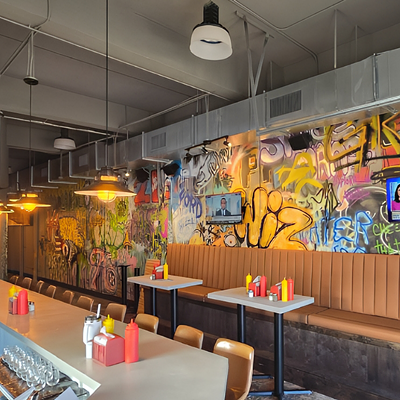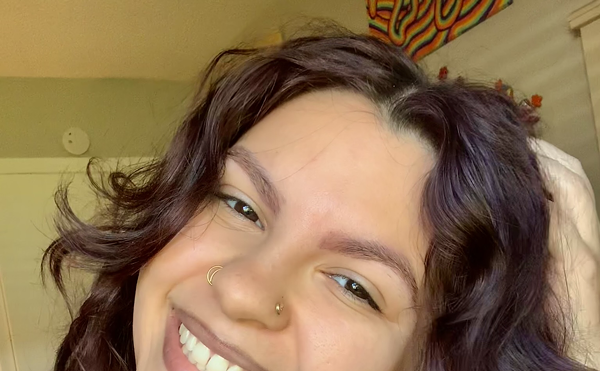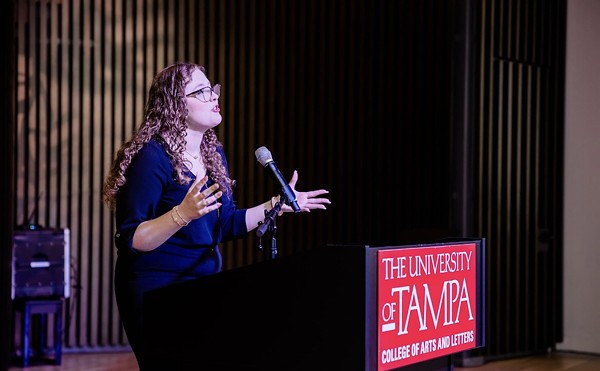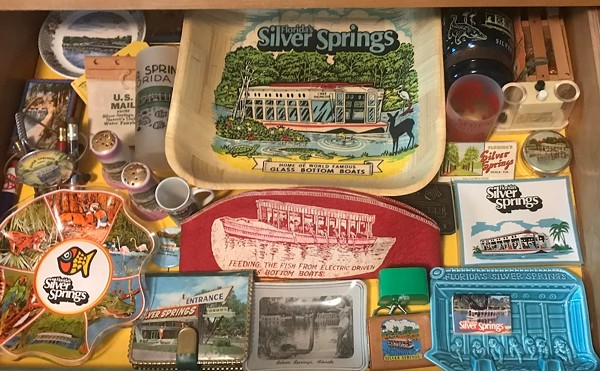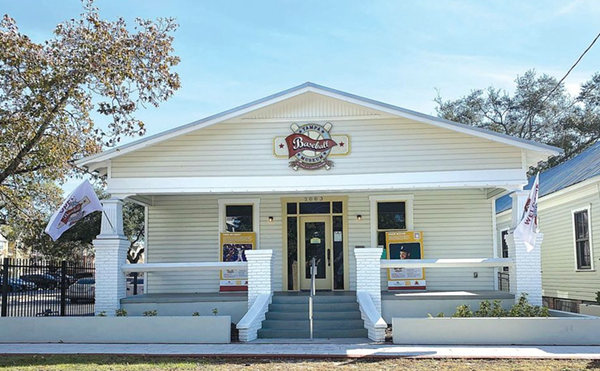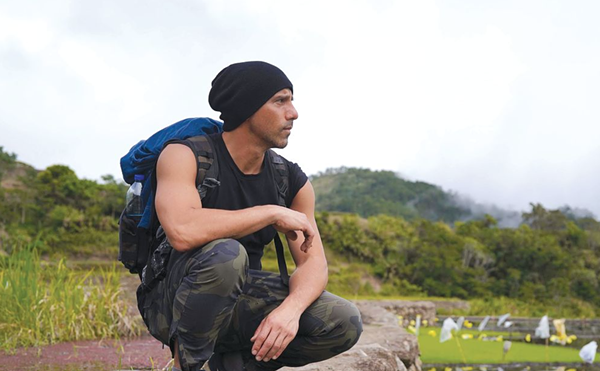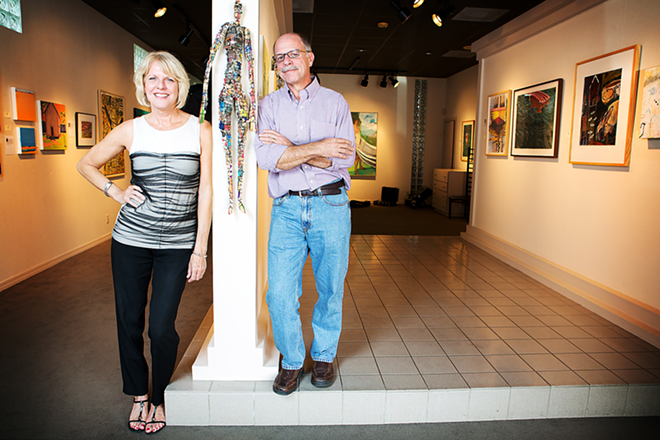
On the eve of opening her South Tampa art gallery in 1987, Cathy Clayton stocked up on bottles of wine, hired a harpist and placed an advertisement in a weekly newspaper making its own Tampa debut around the same time — Creative Loafing. Twenty-five years later, she celebrates owning one of Tampa Bay’s most successful and respected art galleries, the eponymous Clayton Galleries, having survived three recessions as a small business owner and still waking up each morning to find her work “very fun and very stimulating.”
The gallery’s anniversary exhibition, Now and Then, Clayton Galleries, 25 Years, showcases pieces by 28 of the artists whose work Clayton promotes. Its focus, like the gallery’s, is painting by Florida artists: landscapes by Bruce Marsh, Cassandra James and Kathy Wright; narrative, figure-driven works by Yoko Nogami and Lynn Davison; geometric abstractions by Peter Brown and Kate Norris; and more. The mix is Clayton Galleries’ recipe for success — intelligent, impeccably crafted and, yes, salable art.
In June, the gallery launches its annual trio of “Hot Summer” shows (look for a new one each month), curated by gallery manager Mark Feingold. Last week I sat down with Clayton for a conversation about her 25 years in the business of art.
CL: How did Clayton Galleries come into existence?
Cathy Clayton: I studied art at USF and then got as far away from it as I could for a while because I did not want to teach and didn’t consider myself a fine artist. I got into insurance and then I thought — this has nothing to do with who I am or my life — so I migrated back into the art world and worked at another gallery for about three years. The whole time I was at that gallery, I knew this was what I was supposed to do. Then at about age 30, I had the opportunity to open my own gallery [when a client offered to invest in the business] and bought this building. I incorporated in December of 1986, then it took about nine months to rehab this part of the building, and opened in August of 1987.
Who were the first artists you represented?
A lot of them are the same artists we represent now. Before I represented Craig Rubadoux, he was tied up in a gallery in Sarasota. I would go down there and buy his work and just stick it in my office, and people would say, “We want it, we want it.” He knew how devoted I was, and as soon as he got out of his contractual agreement [with the other gallery] he came up to me. And then all of a sudden these other artists started coming to me — Jeff Kronsnoble. It also had to do with the first recession. There was another gallery down the road, and they all came here, so I got Bruce Marsh, George Pappas, Roberta Schofield, a lot of the USF [painters].
Had you known those folks at USF?
George Pappas was my painting professor. I told him that even though he gave me a “C” in painting because I didn’t finish one painting, I would still represent him.
What’s the best choice you’ve ever made as a business owner?
It was in 1993 when I begged Mark to come work for me. He had worked for the Tampa Museum of Art, and he had his own frame business. … He has helped me build the business.
How do you find new artists?
It has evolved over the years. At first I was definitely out traveling and looking. Nobody knew who I was, so I was begging people and buying their work and enticing them to come to me. And then as the gallery got its reputation, good artists get other good artists. The best way we’ve found is that our wonderful painters will say, “I have a friend.”
What have been the challenges of growing an art gallery into a successful business in Tampa?
Economics. This is my third recession, and it’s really a tenacious one. The market has shifted and changed. It’s all about sales and staying in business with framing and selling art without compromising the integrity of your aesthetic. And presenting art that doesn’t bore people but also doesn’t offend or scare them. I’ve been really fortunate with the stable of artists I’ve had. They understand the gallery system and really are partners, so I don’t have to play mommy or detective.
Over the years I’ve heard people refer to Tampa as a tough market for selling art. Is that true?
It depends on what year. When I opened, everyone, especially corporate collectors, could not get enough of Florida artists. It was part of their PR strategy. With the first recession, everyone got a little more quiet about collecting. There are still both corporate and private people who understand the value of art, but they’re much more low key about it.
You also show folk art. How did you come to fall in love with that genre?
I know that light bulbs can go off over your head, but if a light bulb can go off over your heart, that’s what happens with folk art.
What sort of advice do collectors, or would-be collectors, ask you for?
Sometimes they say, “Is this going to appreciate?” We just say, if you want to buy [for that reason], buy real estate or buy stocks. We try to guide them to trust their instincts and buy what you love. Buy what you absolutely love to look at and something that means something to you.



